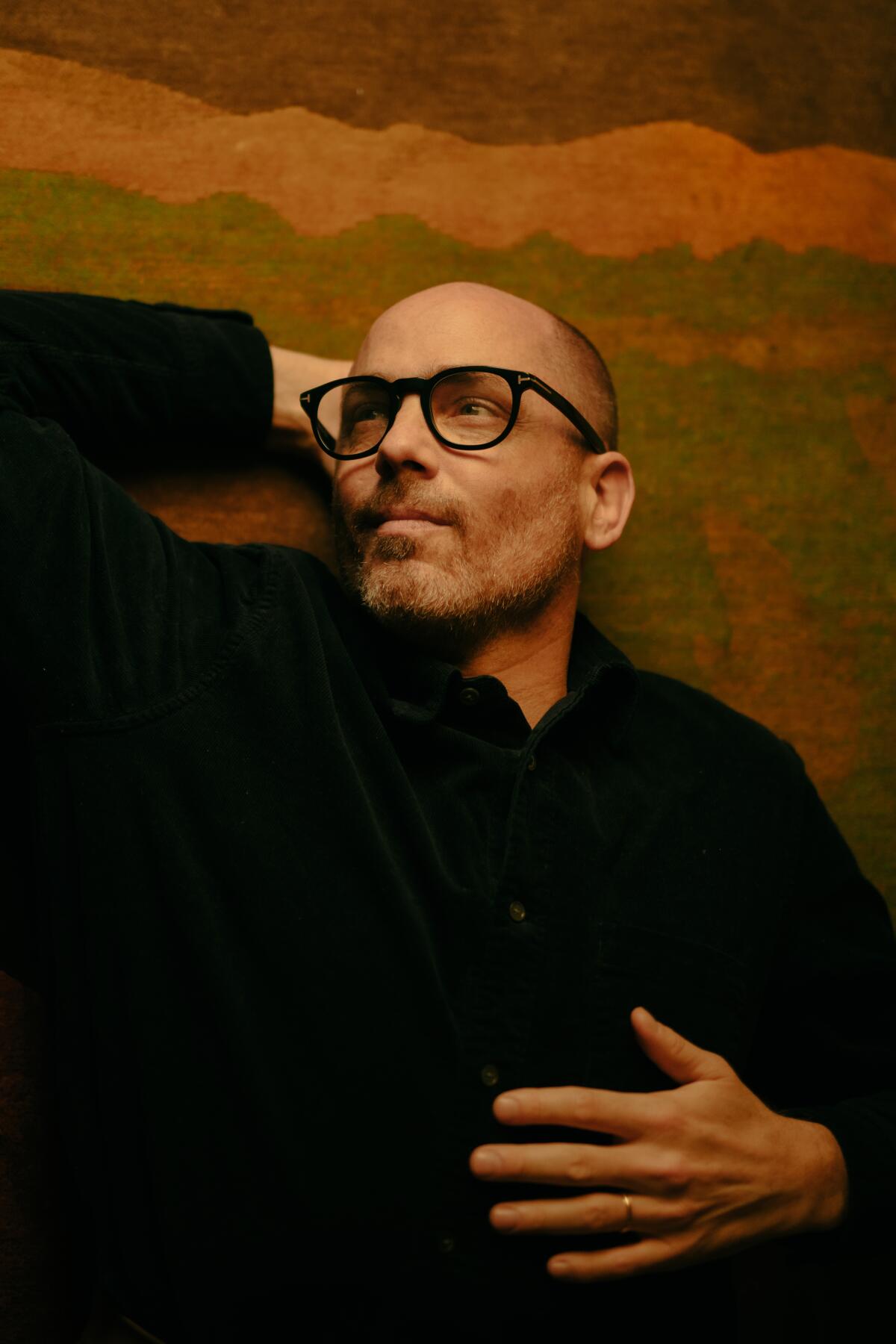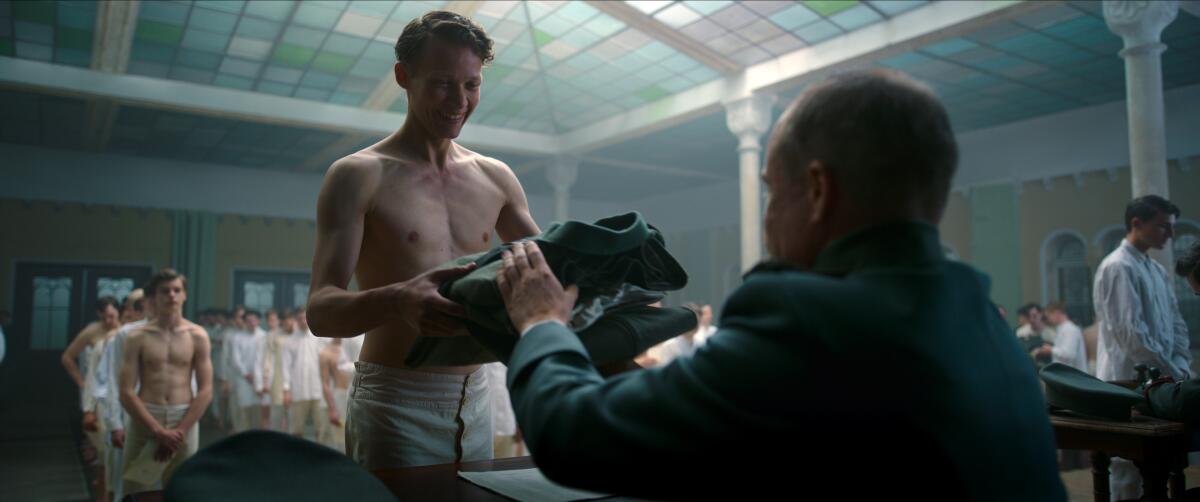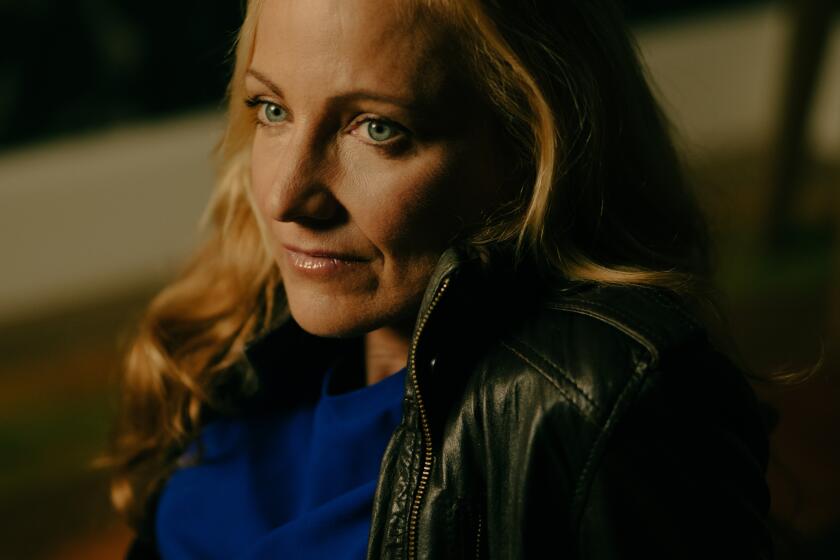Why Edward Berger’s teen daughter got the last word on ‘All Quiet on the Western Front’

- Share via
When Edward Berger talks about the impulse to make the World War I saga “All Quiet on the Western Front,” he says he can speak only as a German filmmaker adapting a classic German novel (by Erich Maria Remarque) about the horrors a Germany-waged battle inflicted on its youth. Something in him wanted to add to an international conversation about war’s fruitlessness.
“We’ve obviously been responsible for two world wars last century, and they’ve left a lot of scars and an imprint on our DNA,” Berger says. “Unfortunately, war seems to be a never-ending topic.”
Berger shies from making comparisons between his film and the situation in Russian-invaded Ukraine, but it hit home for him what world his movie was being released into when he saw a post on German photographer Wolfgang Tillmans’ Instagram page juxtaposing 2022 images of Ukraine and those from Belgium in 1916, pictures Berger himself had used as research. “You couldn’t tell which year it was,” says Berger of Tillmans’ provocative link. “The burned tree stumps, the trenches, the muddy fields and soldiers. They were interchangeable. It just keeps repeating itself.”
Lesley Paterson takes us inside the process of writing ‘All Quiet on the Western Front’ and how she found the key to unlocking the story.
Berger’s film, which he co-wrote, includes its own visual take on the gruesome grind of war — an opening sequence that coldly shows the system that turns a dead soldier’s bloodied uniform into the “new” kit that wide-eyed protagonist Paul (Felix Kammerer) will wear as the next innocent charging into battle.
“The war machine became a big theme, how it eats up these kids,” Berger says, “so we tried to find an equivalence in the images. How the machine recycles life, and life becomes meaningless. Within days, their souls die.”

Berger asked his composer, Volker Bertelmann, to reflect that in the music too. “I told him to destroy the images, not to sentimentalize,” the director says. “What’s the sound inside Paul’s stomach?” What came back was a score marked by a booming, sulfuric war call played on a heavily amplified harmonium. Adds Berger, “You hear the inside of the pump, and it became this theme of taking your last breath. It’s the feeling of the war machine.”
A contrast to that violent churn was essential to Berger’s vision too, so he also sought what he calls “pockets of peace” alongside or in between the muck and blood, whether it’s the sounds of birds or the silent poetry of a beautiful countryside. “It was important to me to create a feeling of what we’re destroying,” he says. “If it’s only loud and muddy, you become blind and deaf. The goal was to look at these images and get melancholic.”
With budgetary constraints putting a premium on rigorous preparation, Berger storyboarded everything with trusted cinematographer James Friend in advance, holing up in a hotel room as they covered walls with drawings and acted out battle scenes with an iPhone. By the end they had a 300-page image bible. Then, in the midst of shooting, as doubt crept into Berger’s mind about the task at hand — especially when battle-filming days took their toll — the collaboration proved more than strictly artistic. “Sometimes I was really crushed, and I saw myself sinking in the mud, and [James] was very helpful, saying, ‘You know what, let’s just concentrate on one shot at a time.’”
Antiwar German drama ‘All Quiet on the Western Front’ was named best picture at Sunday’s British Academy Film Awards. “The Banshees of Inisherin” and “Elvis” took four prizes each.
That “one shot,” in fact, applied to how they filmed battle scenes: sticking to what their main character sees in the thick of combat. “Normally, you would probably shoot with three, maybe four cameras to capture everything, but we thought, if we have four cameras, whose perspective is it?” Berger says. “We wanted to give you the feeling that you are with this kid. So we shot everything single camera. And any wide shot was created only to make Paul feel lost, lonely.”
Getting one sequence right especially gnawed at him: the solitary, devastating, real-time killing of a French soldier in a crater, what Berger’s 17-year-old daughter confirmed for him was of singular dramatic importance. “My kids are utterly uninterested in which movie I’m doing next, but when I mentioned ‘All Quiet,’ my daughter said, ‘I just read it in school. You have to make it. I cried seven times. And this crater scene, it’s the best scene in the book,’” Berger recalls. “It’s the heart of the movie, it’s so moving.”
What was budgeted to be a four-minute sequence, however, when rehearsed ran at 11 minutes. When his assistant director asked him to simplify it, or else it would take up four days of filming, says Berger, “I had to choose which ear [to listen to], because in the other was my daughter saying, ‘This is the best scene.’ Luckily, I listened to my daughter. And Felix put so much into every shot, he cried for four days straight. He carries the scene.”
Even later, when the editor wanted to shorten it, Berger insisted it stay long and anguished, a German filmmaker letting moviegoers know his perspective on the consequences of destruction. “I wanted the audience to go through it with him and be utterly mortified by it. I knew we would betray the soul of the book if we took shortcuts.”
More to Read
Sign up for The Envelope
Get exclusive awards season news, in-depth interviews and columnist Glenn Whipp’s must-read analysis straight to your inbox.
You may occasionally receive promotional content from the Los Angeles Times.












